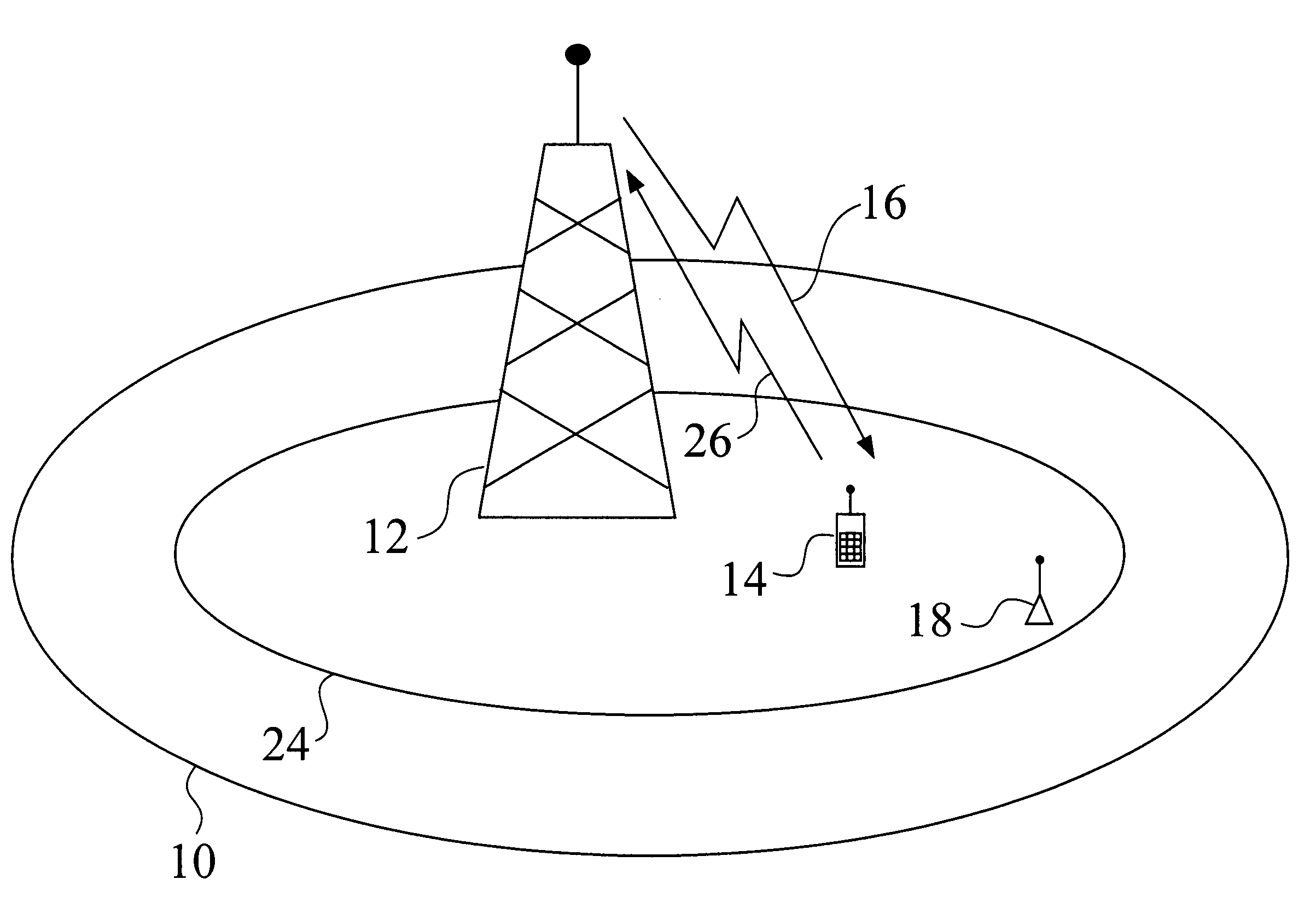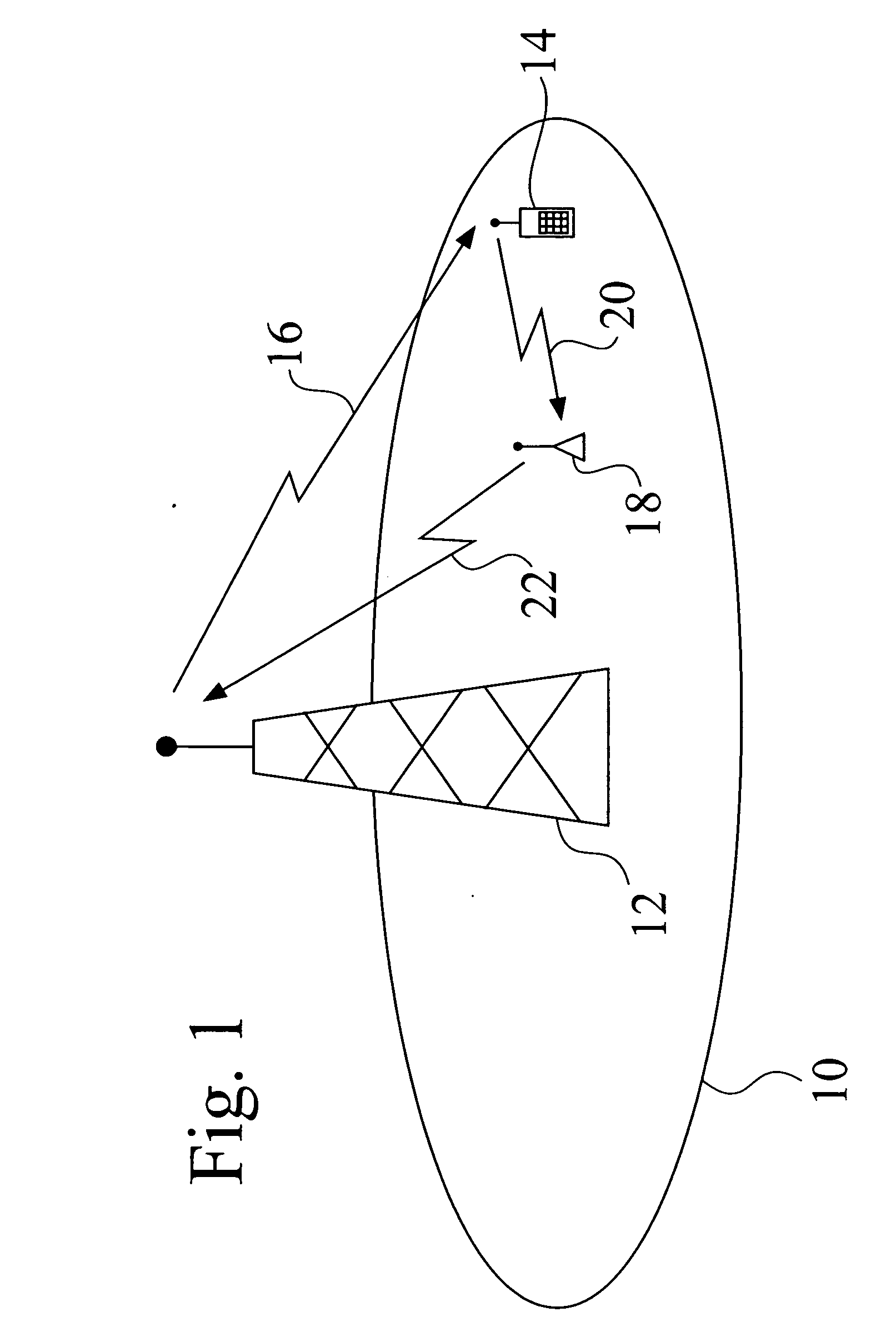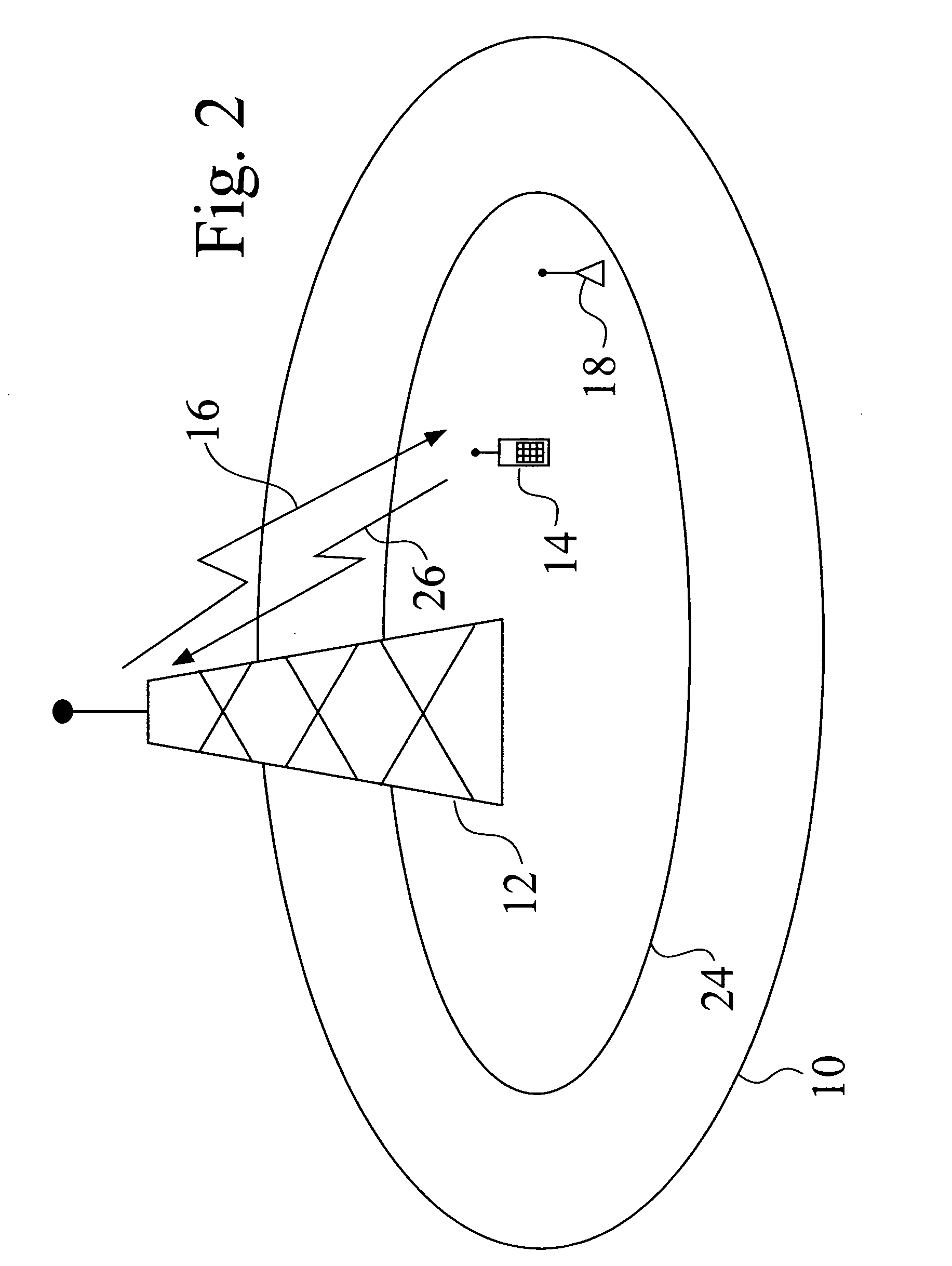Cellular communication system
a cellular communication system and cell phone technology, applied in the field of enhanced cellular communication systems, can solve the problems of poor voice quality, call failure, premature disconnection or disconnection, etc., and achieve the effect of improving the performance of a conventional cellular telephone system
- Summary
- Abstract
- Description
- Claims
- Application Information
AI Technical Summary
Benefits of technology
Problems solved by technology
Method used
Image
Examples
Embodiment Construction
I. Overview of the Invention
[0021] The present invention comprises methods and apparatus for improving the performance of conventional cellular telephone systems. In one embodiment, a relay transceiver is employed to receive signals from terminals in a cell, and then to send those signals to the base station located in that cell.
[0022] In this Specification and in the claims that follow, the term “conventional cellular telephone system” encompasses any system that employs a radio that communicates with a terminal located a limited region, zone or “cell.” The term “cell” pertains to a volume of space which resides generally above the surface of the Earth, and which is defined by a boundary or enclosure that is permanently associated with landmarks or some fixed geographic feature. A cell may be circular, or may be configured in some other suitable shape. In one embodiment of the invention, a the term “cell” refers to the coverage area of a base station.
[0023] An “inner cell” is gen...
PUM
 Login to View More
Login to View More Abstract
Description
Claims
Application Information
 Login to View More
Login to View More - R&D
- Intellectual Property
- Life Sciences
- Materials
- Tech Scout
- Unparalleled Data Quality
- Higher Quality Content
- 60% Fewer Hallucinations
Browse by: Latest US Patents, China's latest patents, Technical Efficacy Thesaurus, Application Domain, Technology Topic, Popular Technical Reports.
© 2025 PatSnap. All rights reserved.Legal|Privacy policy|Modern Slavery Act Transparency Statement|Sitemap|About US| Contact US: help@patsnap.com



